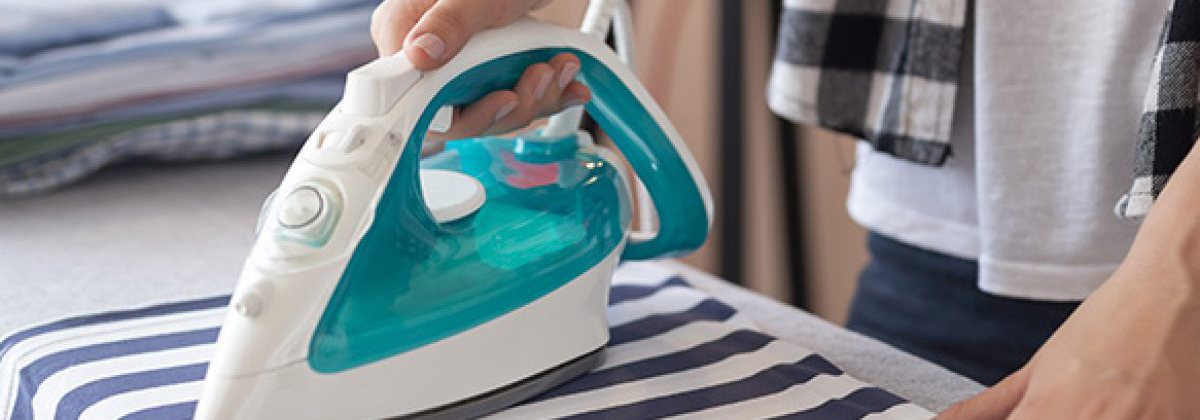26 May How to Iron Different Fabrics.
The method of ironing different clothes and fabrics is critical and should be done in a particular way. Clothes are sewn from other fabrics with different materials, and each one needs a specific way of ironing based on its materials. The temperature, the way, and the type of ironing are different for every fabric. Today’s irons have a unique mark and grade for clothes that you can adjust for various materials. This article will explain how to iron different fabrics correctly. You will learn how to iron each textile and garment so that the clothes retain their appearance well for a longer time and have higher durability.
Different kinds of ironing
Some fabrics require hand irons, and some require presses. Ironing presses smooth clothes by pressing and squeezing the material. But hand ironing opens the wrinkles by pulling on the fabric’s surface. Each of these two methods is more suitable for specific fabrics and garments. For example, hand irons are ideal for smoothing cotton, polyester, and silk fabrics, and irons presses are suitable for delicate fabrics such as jerseys, woolen garments, and pleated clothes. We often use hand irons at home to iron almost all different clothes and fabrics.
Types of fabrics
- Plant origins such as flax, cotton, and hemp
- Animal sources such as silk, natural fur, etc.
- Mineral sources such as asbestos and glass cloths
- Chemical syntheses such as nylon and acrylic
Ironing different fabrics
Cotton
It’s better to use hand irons to iron these cotton clothes. You should start while the fabric is still slightly damp. Place the iron at a high temperature and put a wet cloth on the clothes, and iron it to smooth the wrinkles. If necessary, you can also use steam iron or water spray.
Towel fabrics
There is no need to iron towel fabrics; just use a little fabric softener when washing them.
Synthetic fiber
Use low temperature and steam-free dry ironing for it.
Linen
Iron linen when it is wet and at a very high temperature. Use ironing steam or water spray when necessary. Ironing these clothes with iron presses doesn’t harm them and makes the smoothing process easier. Another way to smooth linen clothes is to hang them in the bathroom with a hanger before ironing to remove the significant and deep wrinkles. In this case, it will be easier to iron linen clothes.
Woolen clothes
These fabrics, used to make winter clothes, are a little more sensitive to ironing. First, open the wrinkles of the clothes as much as possible during washing to reduce the need for excessive ironing. Next, the temperature that you should choose to iron these woolen clothes is the lowest ironing temperature. Turn the garment over and iron it from the inside to iron it. Before ironing, it’s better to moisten the clothes and then put a piece of white tetron on them to prevent damage to the woolen clothes. In addition, you can use a sprinkler to moisten the clothes to make ironing easier. But avoid steaming it.
Polyester
When it’s wet or with a water spray, iron polyester clothing, but don’t use steam. Due to the chemical and synthetic materials, it’s better to iron the polyester material after moistening with low heat. Steam or high heat can leave a plastic layer that makes it shiny.
Velvet
Velvet fabrics usually have nylon acetate fiber and rayon. They don’t need to be ironed. If you have to do it, you should put the iron on steam mode and don’t iron directly on velvet cloths. Open the wrinkles by using the steam iron. If you can’t do this, you can leave your clothes at the dry cleaners.
Kasmir
Never iron soft Kasmir woolen fabrics and leave them to dry cleaners.
Lace fabrics
Delicate lace fabrics need a low ironing temperature for smoothing, and it’s better to smooth them without using steam. Iron the dry lace fabric with low heat using a protective cloth, and don’t use water spray or steam ironing.
Nylon
Due to the delicacy and sensitivity of the clothes, use a low temperature and steam ironing. Don’t use dry and steam-free ironing. Use water spray during ironing to smooth wrinkles on clothes.
Satin
For satin ironing, use a low degree of ironing and put a piece of Tetron cloth on it to protect it. Don’t use steam or water spray as much as possible if you want your satin fabric to iron faster, iron it when it’s wet.
Acrylic fabric
The best time to iron this type of fabric is when it’s dry. Set the ironing temperature to the lowest degree and in a dry and steamless state. Due to the softness and sensitivity of these clothes, you should iron them with more care and patience. Instead of using a steam iron, it’s better to use water spray and iron the clothes inside out.
Cashmere
Because the clothes are made of goat wool, it needs a lot of care. Place it on a flat surface to dry. The clothes can be turned inside out and then ironed to eliminate lines and wrinkles. Ensure that there is no stain on the clothes during ironing because this stain will remain.
Pleated clothing
To facilitate the ironing process and reduce its time, apply aluminum foil to the ironing table to make the ironing table warmer. In this way, you can iron both sides of the garment together. To iron this garment, you must reduce the heat of the iron and put it on steam mode.
Micro fabrics
Micro fabrics are used in coats, overcoats, jackets, skirts, and sportswear. The feature of this fabric is the lack of moisture absorption. Due to the polyester in the material, it’s effortless to wash micro clothes. You can wash them in the washing machine. To prevent damage to the fabric texture, set the washing temperature to a low cycle. If you want to iron them, it’s better to put the iron on steam mode and press it on the fabric.
Silk
Be sure to use low ironing temperatures to iron these delicate fabrics. It’s better to iron these clothes shortly after washing when the clothes are still wet. Never use the steam and sprinkler option at all. Also, iron these garments from the inside and turn them upside down when ironing. You should use a protective layer for ironing silk clothes.
Rayon
To iron rayon clothes, turn them inside out, then set the ironing temperature to low. Remember not to pull the clothes while ironing.
Slimy or sticky fabric
Most of these fabrics are made of linen or polyester. These fabrics are soft and of high quality. You should iron them in a wet state. If these fabrics are completely dry, use water spray before ironing. Be careful not to iron them too much.
Jeans clothes
Do not iron jean pants directly, as the heat will cause the pants to loosen and sag. The best way is to use a steam iron.
Lenin
Turn Lenin’s clothes inside out for ironing.
Lame clothes
You don’t need to iron your clothes if they don’t wrinkle because you may damage the clothes’ fabric.
Velvet stripe
First, flatten the garment and decrease the ironing temperature. Put the iron into a press position. After ironing, hang them immediately.
Woven clothes
First, close the garment’s buttons, then turn it inside out. Then spread the garment on a flat surface so that direct heat doesn’t damage the fabric. If your material is made of wool and silk, the high heat of the iron will damage its fibers. Therefore, put a damp cloth on the fabric that acts as insulation and doesn’t let the direct heat damage the material. After ironing, please wait for the garment to cool down, then remove it so that its texture doesn’t loosen. Note that one of the advantages of ironing clothes in reverse is that they can prevent burns and electric shocks on the clothes and minor damage to the fabric of the clothes.
For most people, the main problem starts when they wash their clothes, and now it’s time to iron the laundry. Ironing is always a tedious task, and at the same time, it requires a lot of care to do and maintain the structure of the clothes to make the clothes smooth and tidy again like the first day. If you know simple rules and strategies for ironing your clothes, It won’t be too difficult. If you don’t have the opportunity or patience to wash your clothes, you can count on the specialized NeatEx team. With the most advanced tools and the latest knowledge, we will deliver your clothes of the best quality as soon as possible. Don’t damage your valuable clothes with improper washing. NeatEx washes your clothes in the best way and ensures you have clean and tidy clothes.




Sorry, the comment form is closed at this time.